By Dan Weisz
My general image of ducks is that they are plump and passive, floating on water. Even when I see them in the air their large round bodies are what draws my eyes, not their wings. One afternoon at Fort Lowell Park though their wings caught my attention. Here are some views featuring their wings. Most of the photos demonstrate what is called comfort behaviors by the Cornell Lab of Ornithology. “Common comfort behaviors include preening, bathing, shaking, wing-flapping, wing- and leg-stretching, scratching, and tail-fanning. Generally these activities are performed on open water.”
This American Wigeon was flying over from the other side of the pond. It is using its tail as a third wing (like the spoiler on an airplane), braking in the air to allow for a gentle landing on the water.
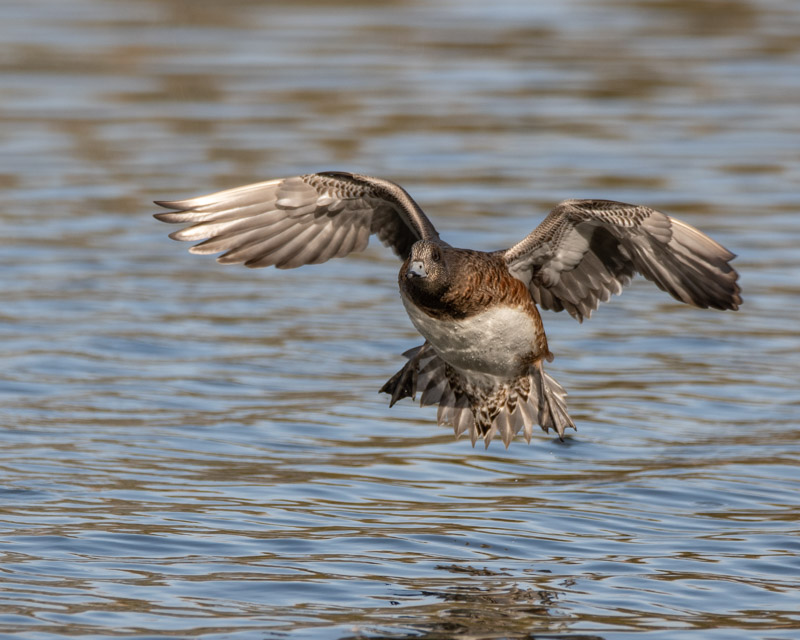
This is one of my favorites of this group. I like the water droplets flying through the air and this bird’s posture with its wings forward. (The American Wigeons in these photos may be different birds. The photos are not necessarily one bird shot in sequence.)
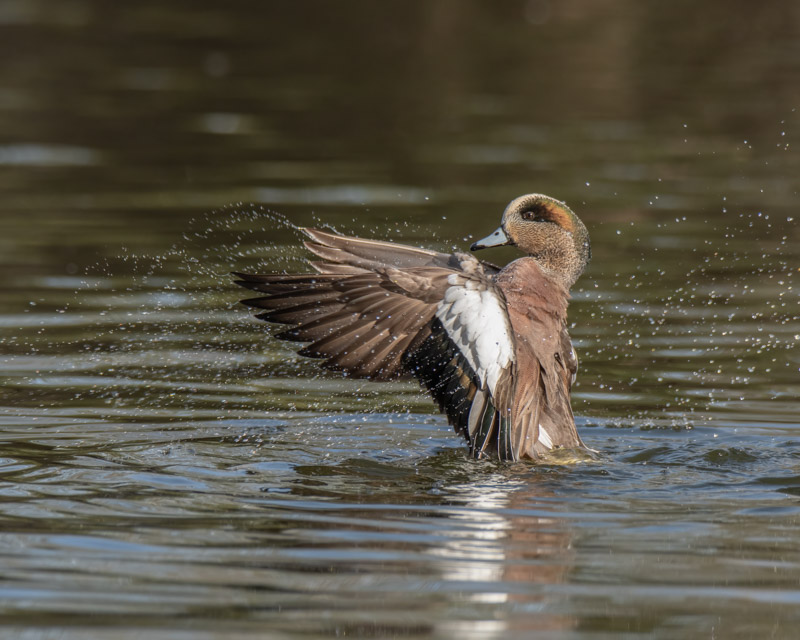
This Wigeon was fluttering vigorously causing a huge storm of water droplets for about ten seconds.
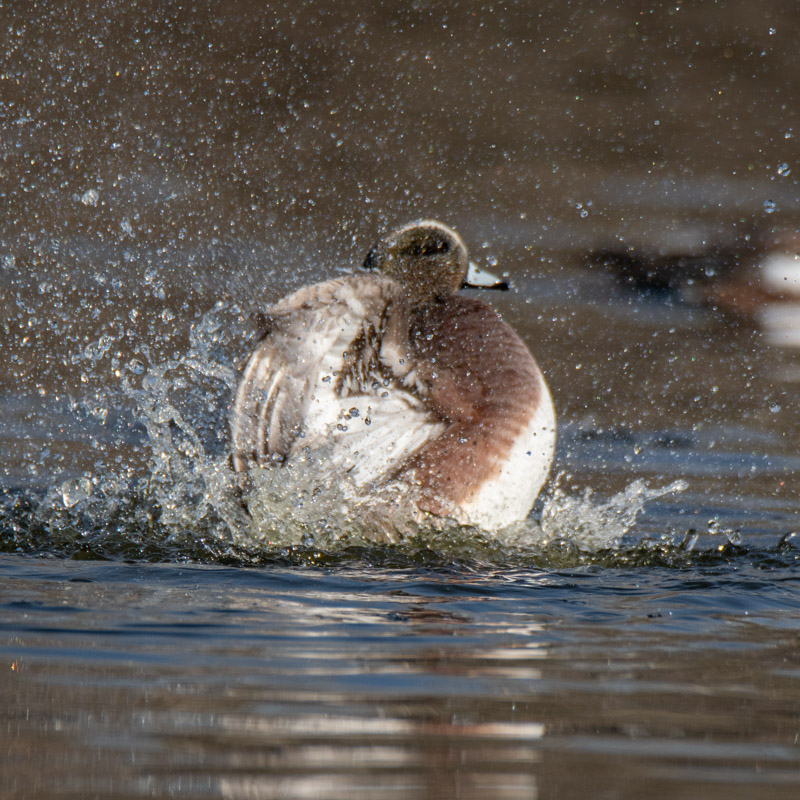
The view of a Wigeon from the back as it leans forward. Even the feathers on his back are raised up.
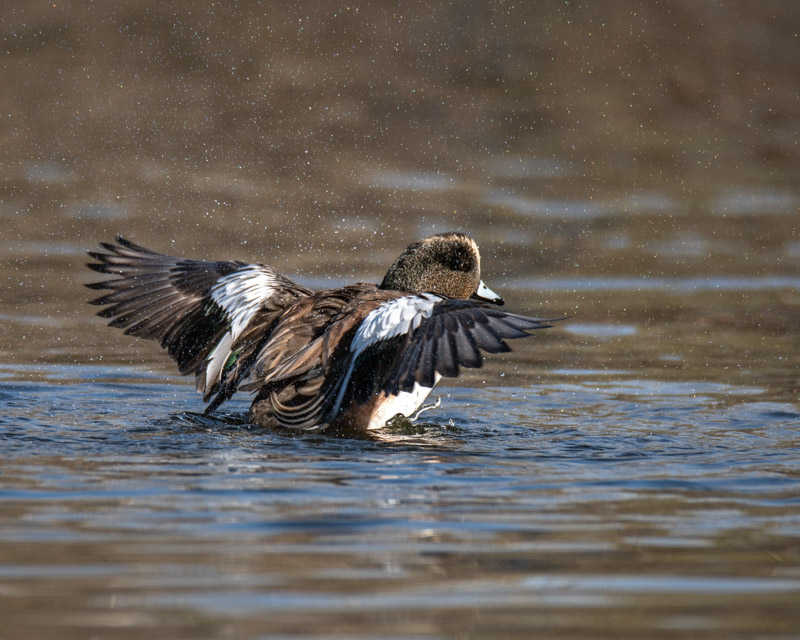
With its wings stretched back, the various feathers on the underwing can be seen. One large water droplet is suspended mid-air above the Wigeon’s pastel blue bill.
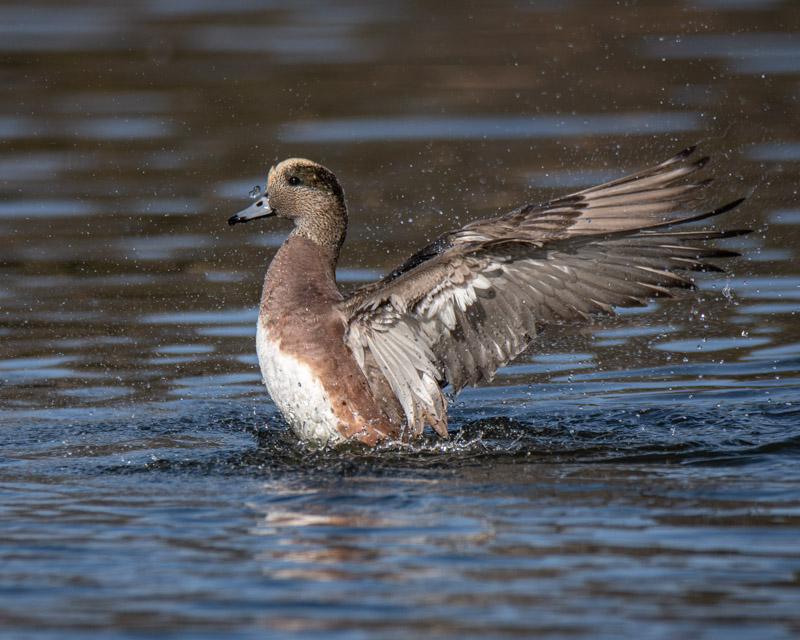
The conductor leading his orchestra….. Each of the long primary feathers are separated in this pose and are just above the surface of the water. By the way, that dark tip on the end of the duck’s bill is called a nail. It is used for hooking or moving food items as we might use our fingernails to manipulate something.
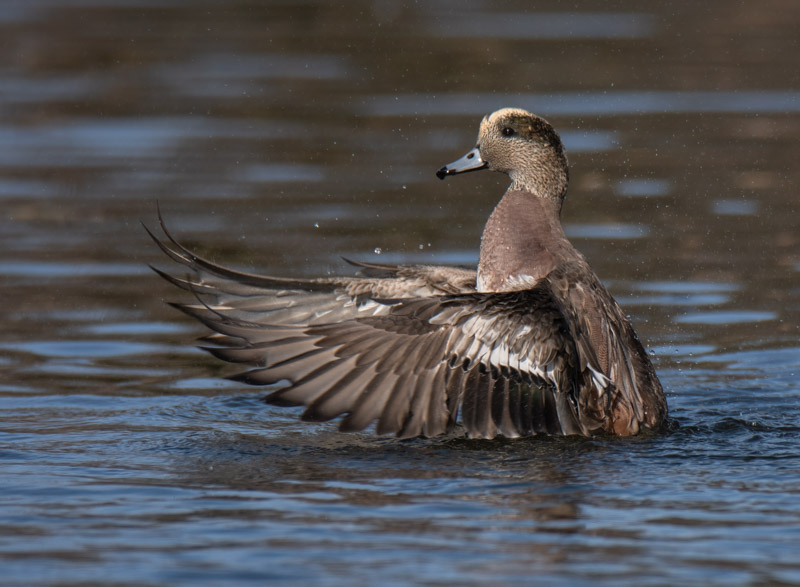
As the Wigeon swings his feathers back, there is a gap between each of the primary feathers and the tips drag in the water. The duck is beginning to settle back down into the water.
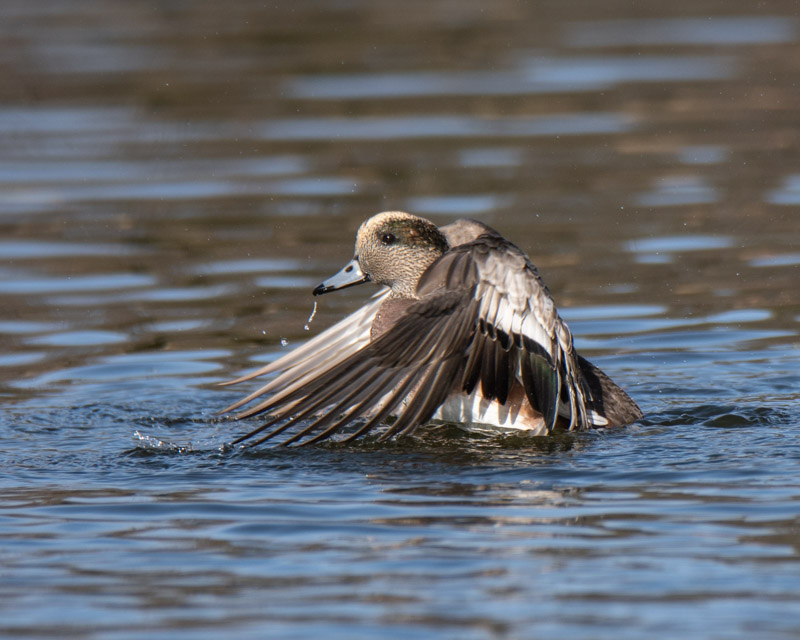
Here, a Mallard is just about ready to land in the water. Its wings are spread as are its tail feathers. Its feet are just about ready to hit the water and brake its landing.
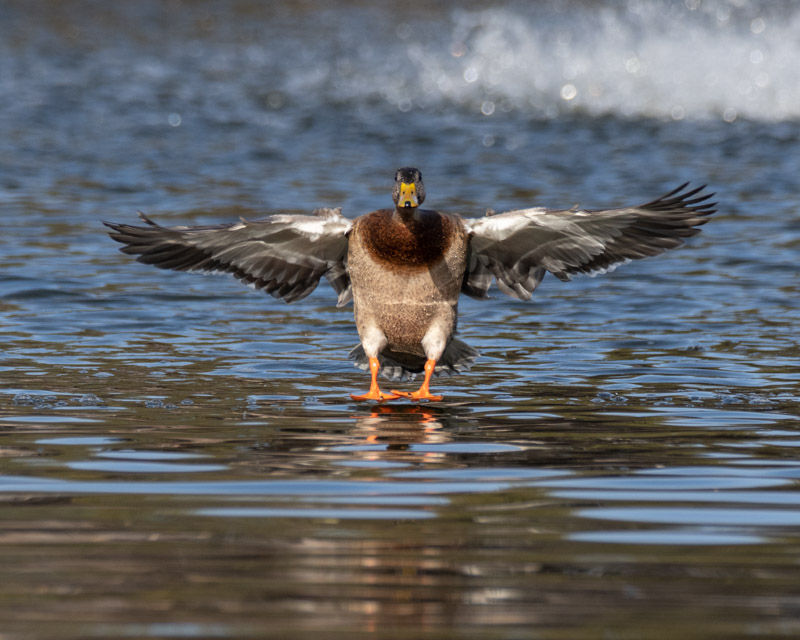
And then the Mallard begins its comfort behaviors. Angel wings maybe???? And by that I mean the wings of an angel. There is a condition that some ducks can get called “Angel Wing” which occurs when flight feathers grow faster than the underlying wing structure. This causes the wrist joint to twist outwards so the wing permanently sticks out instead of ‘gracefully’ folding against the body. This mallard does not have that condition.
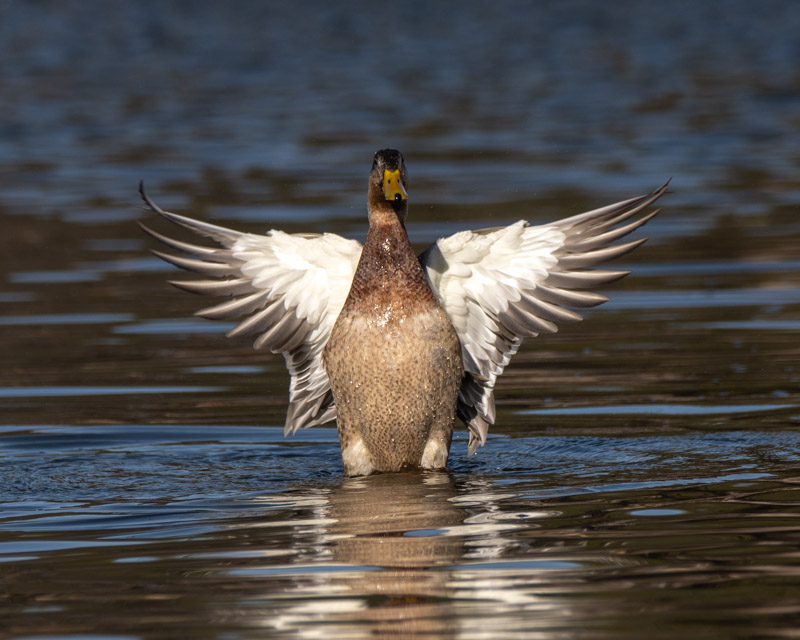
As an American Wigeon flies just across the surface of the pond, its wings and tail are spread,
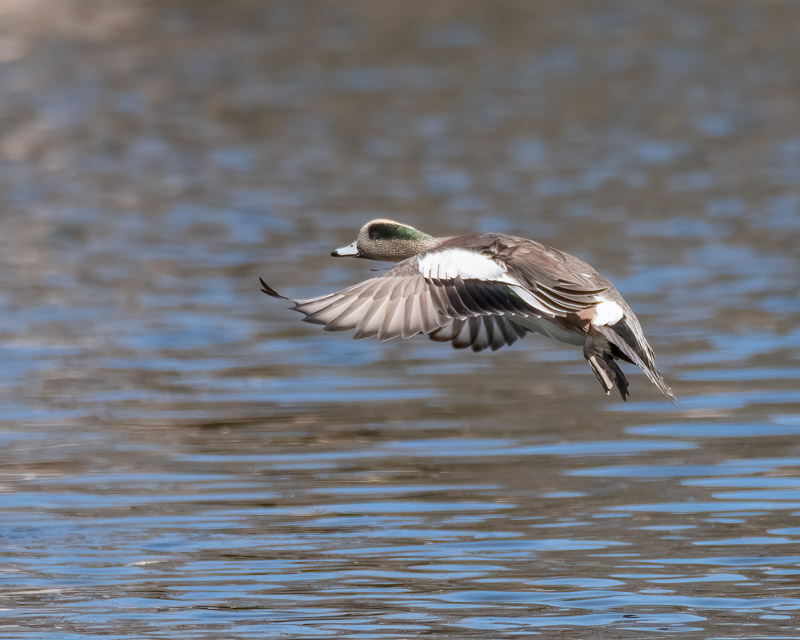
Finally, a bird other than a duck. This Great Egret arrived and then spent time fishing in different parts of the pond. At one point it circled around, landing near the opposite bank. This shows its truly Great Wing with a wingspan of 4-5 feet.
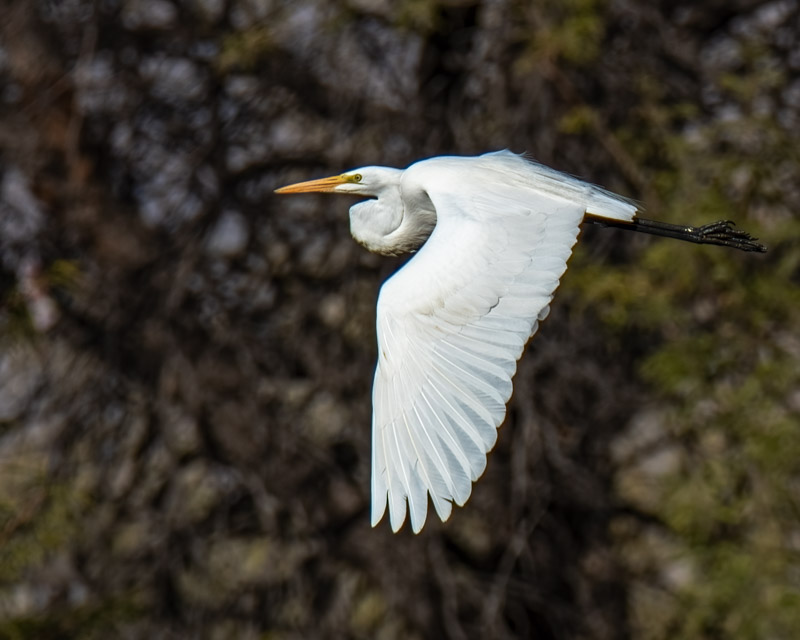
I’m not sure that ducks and birds recognize their wings as anything more than utilitarian, but we are fortunate to be able to see the beauty in them.
